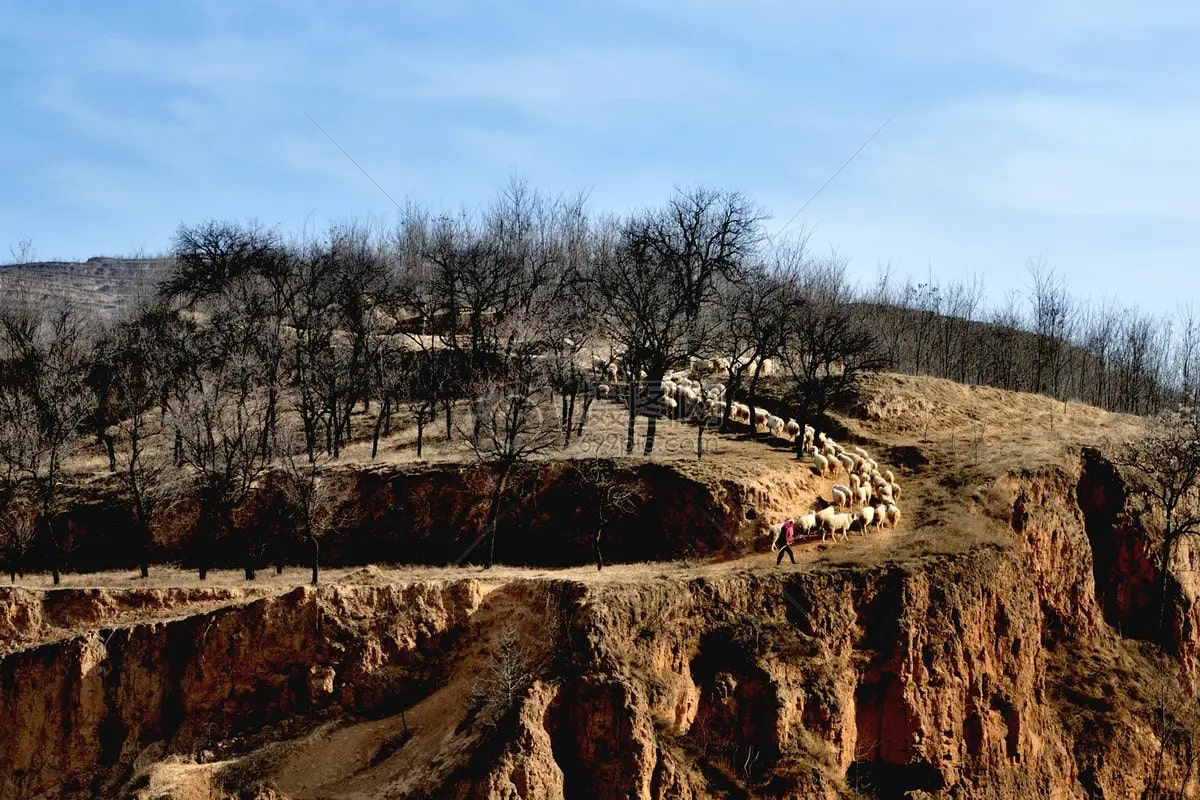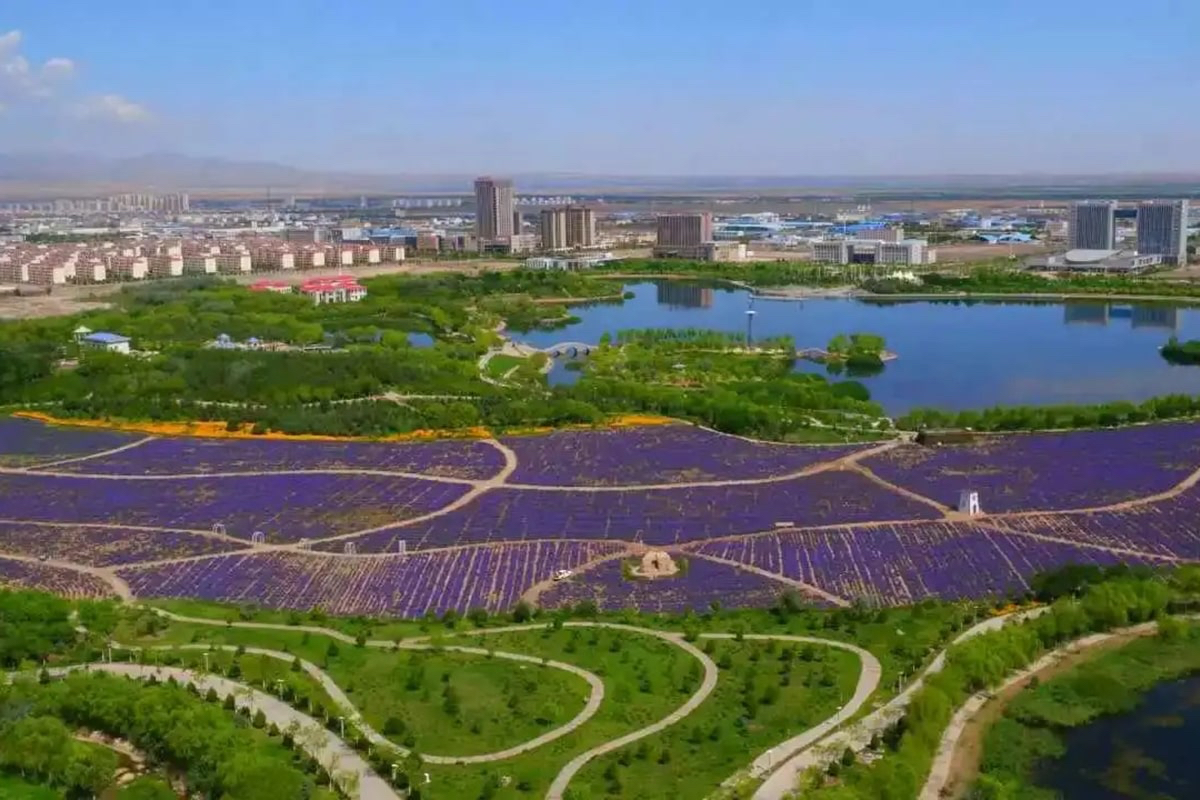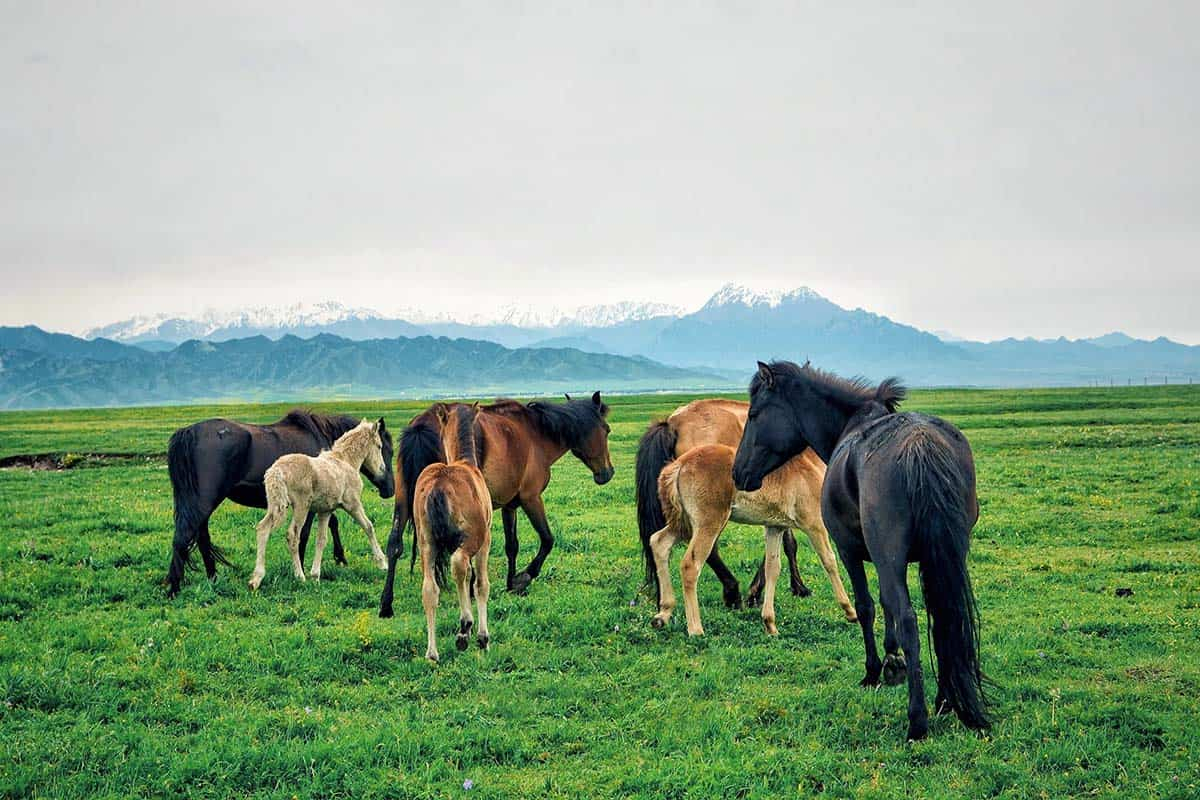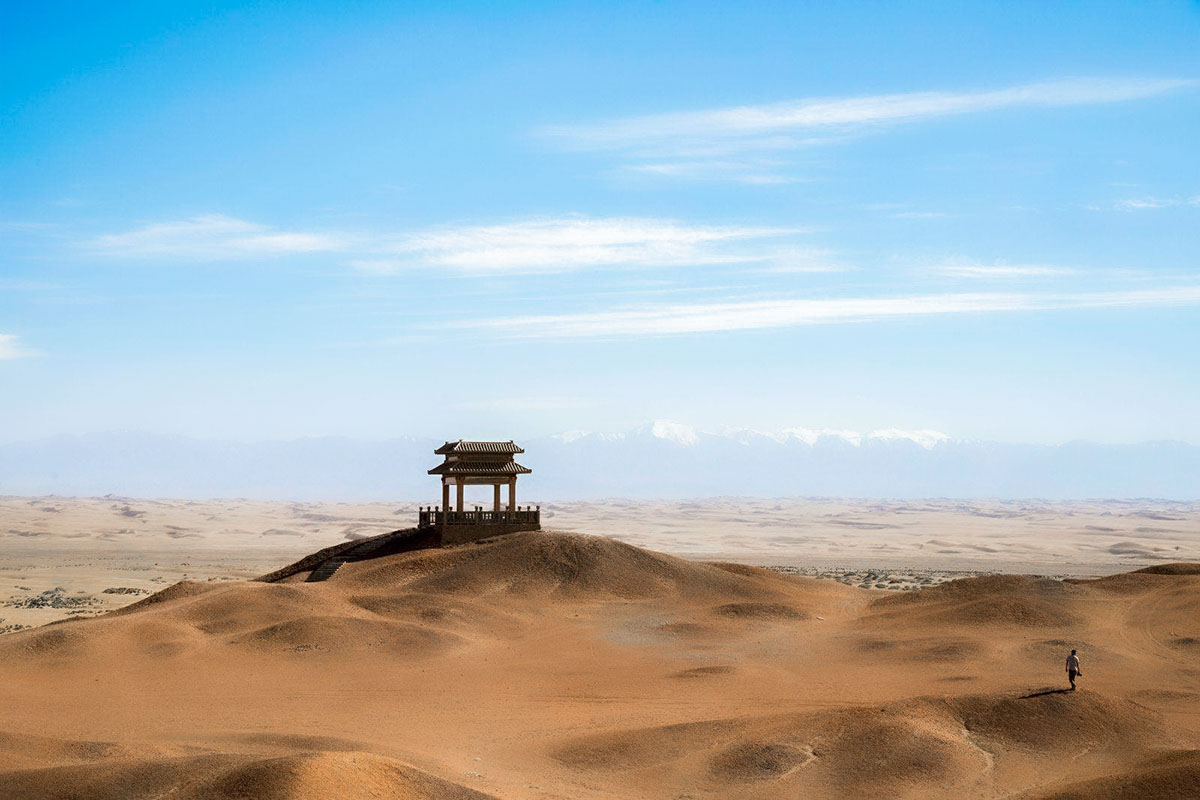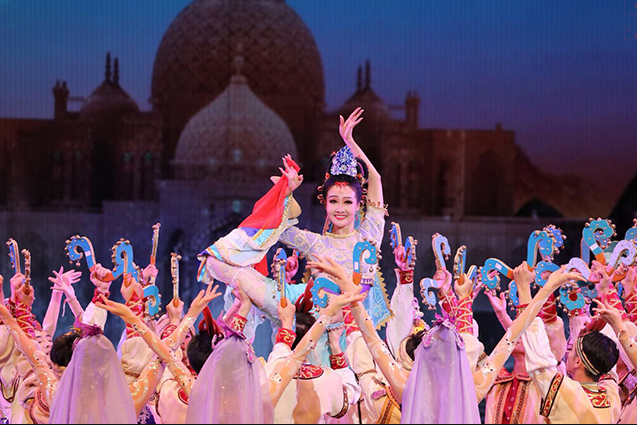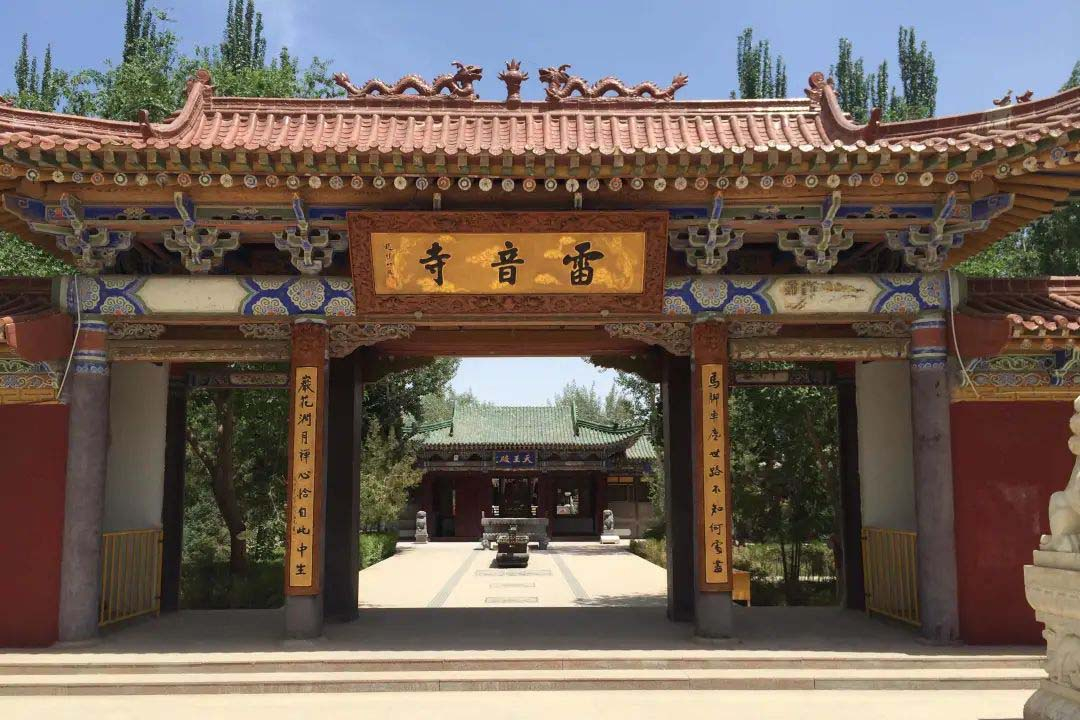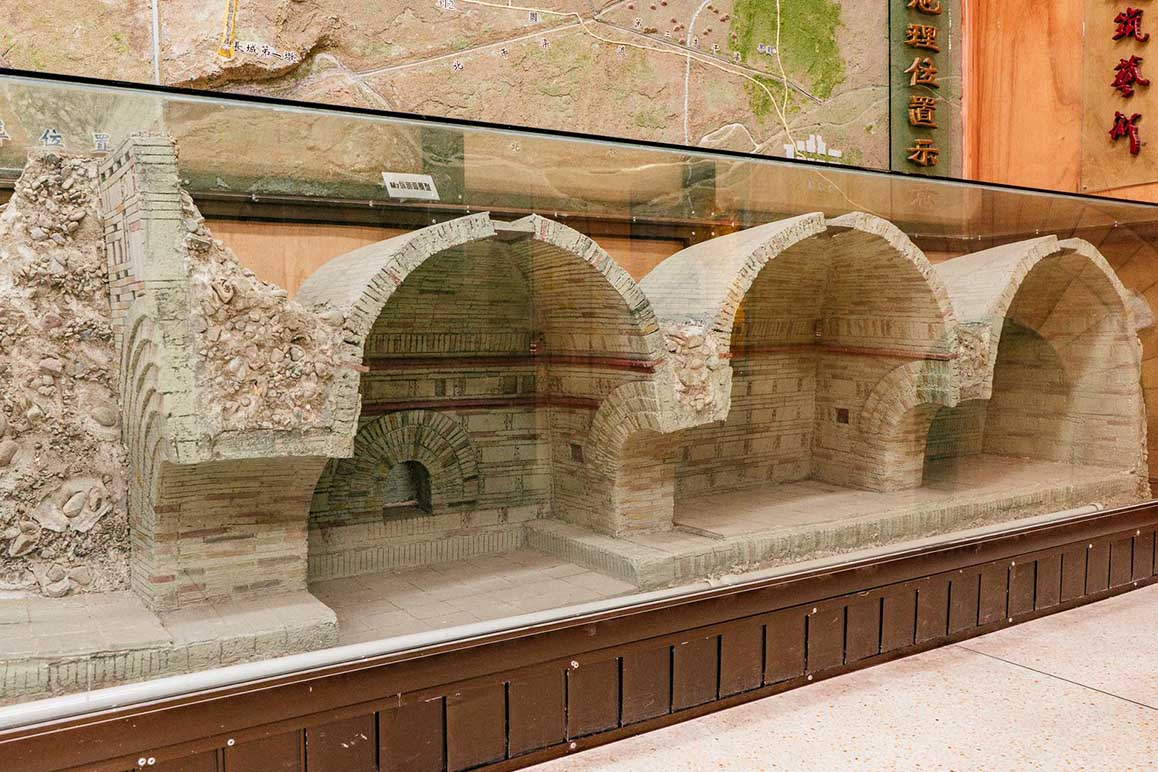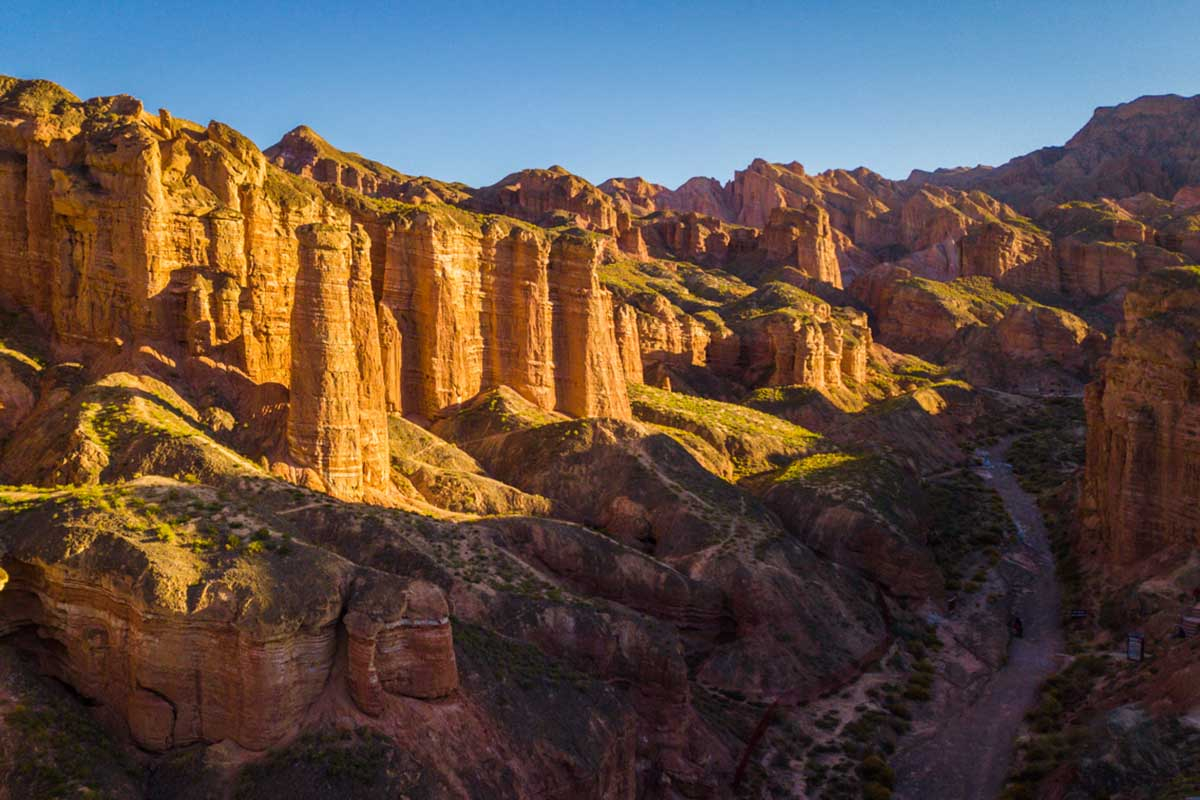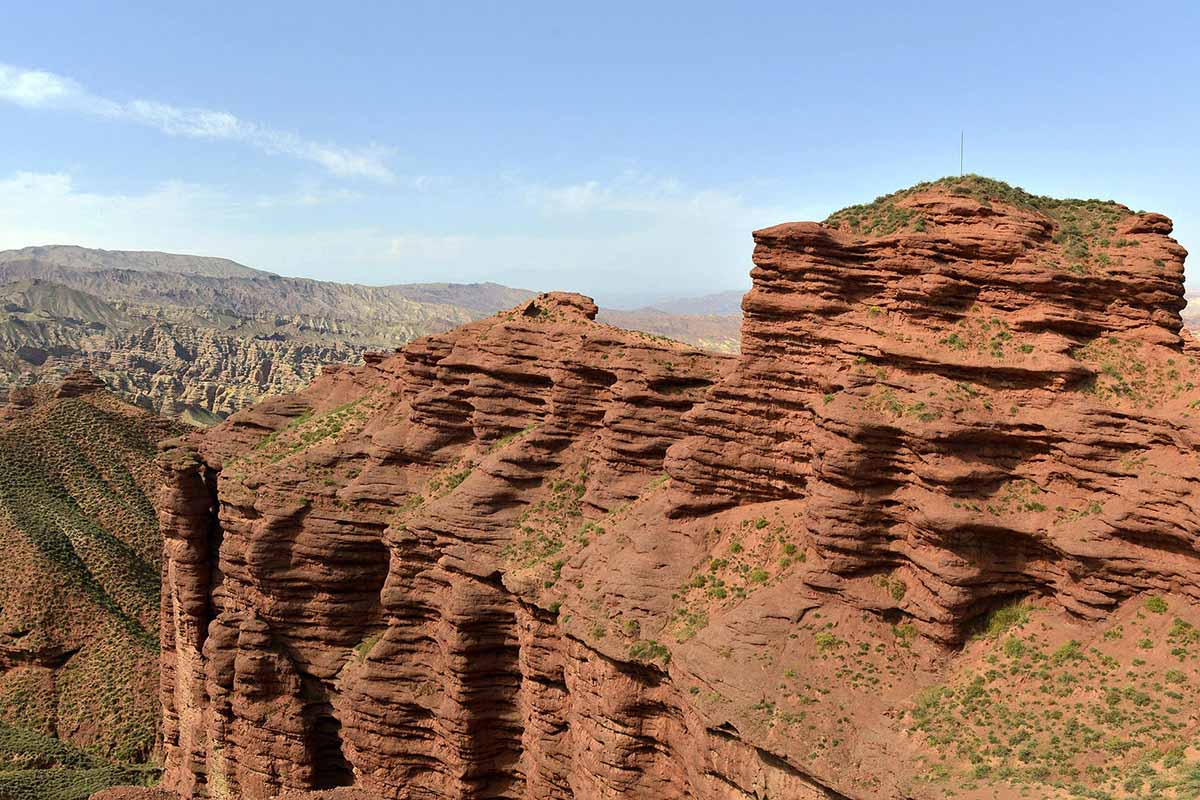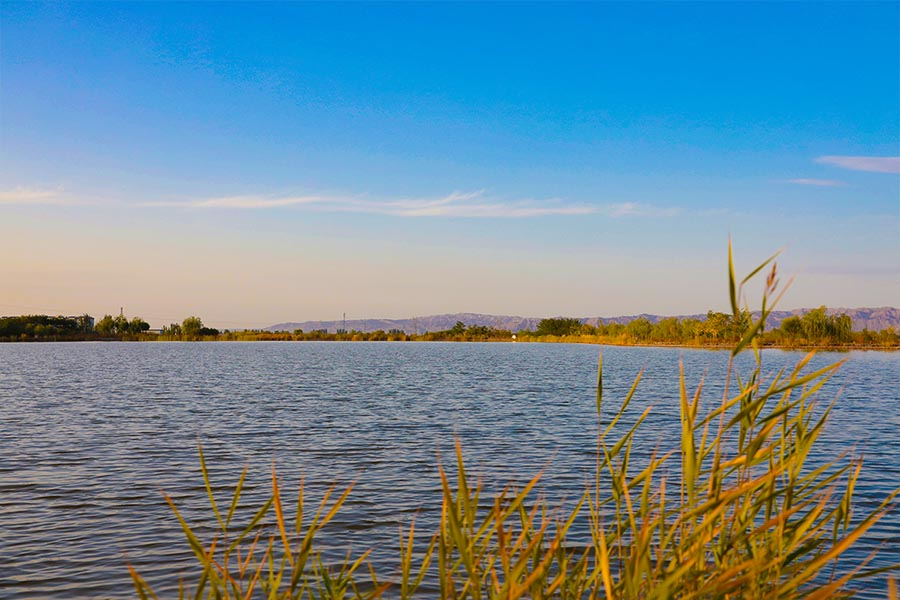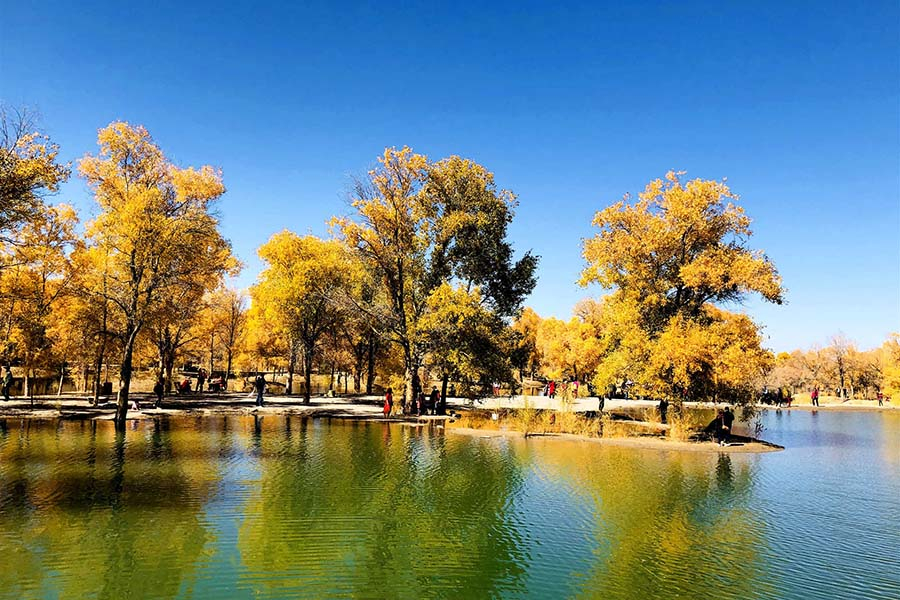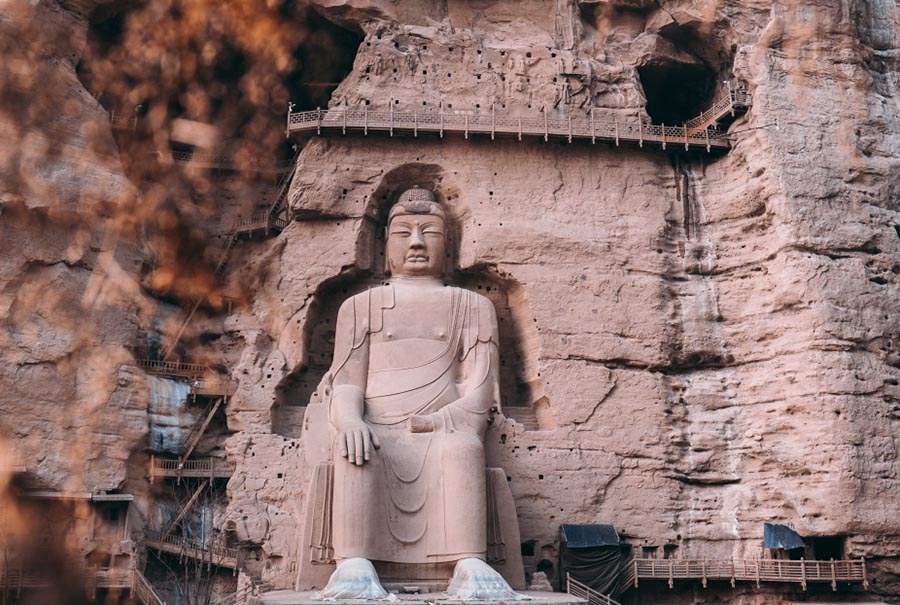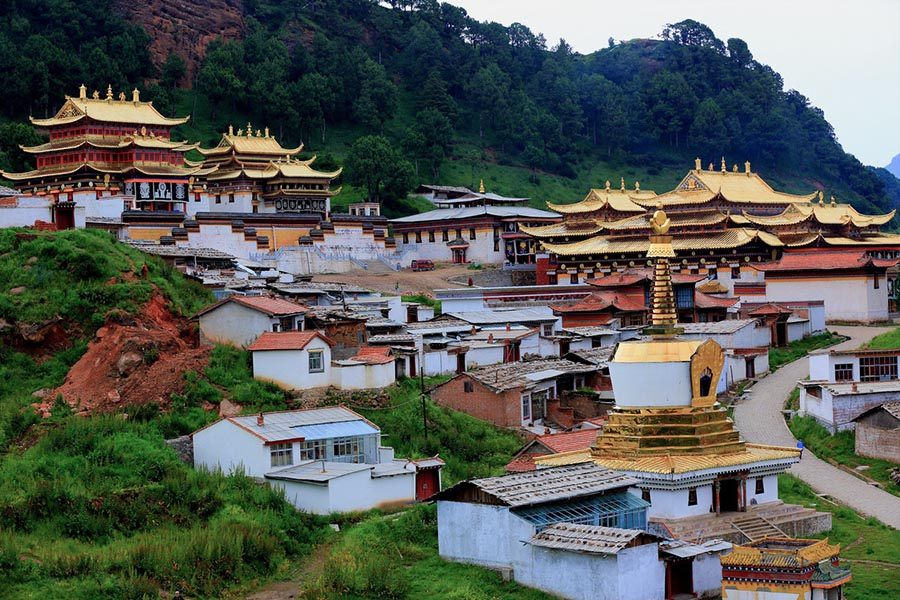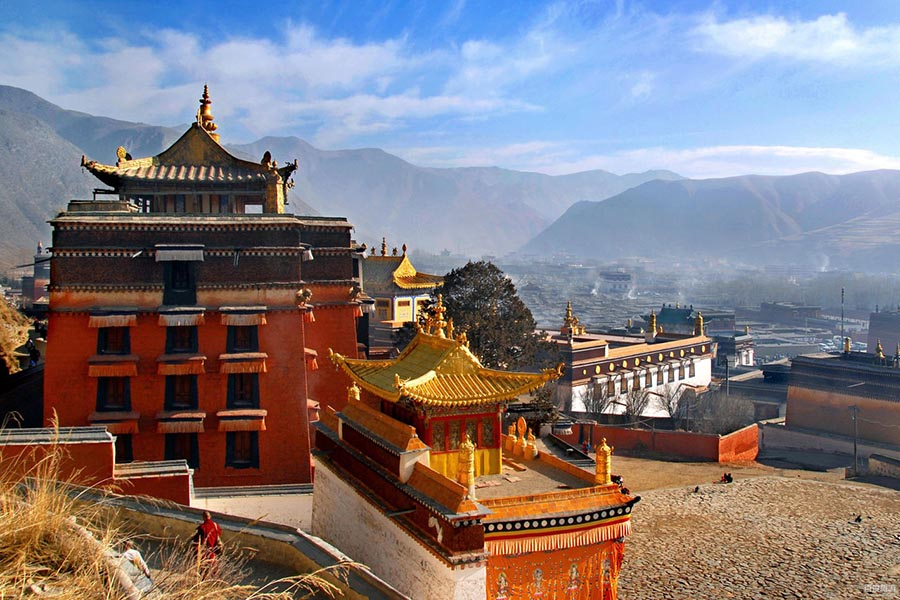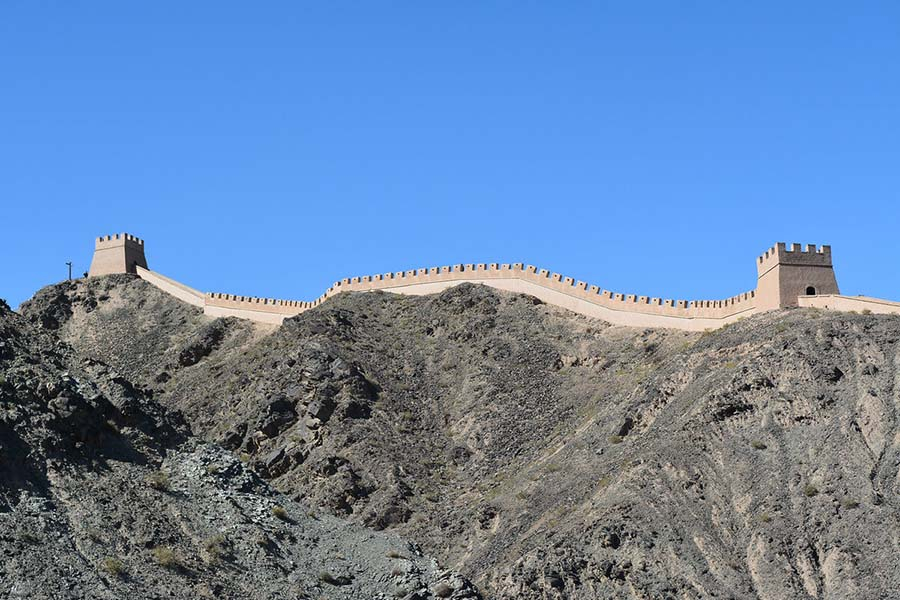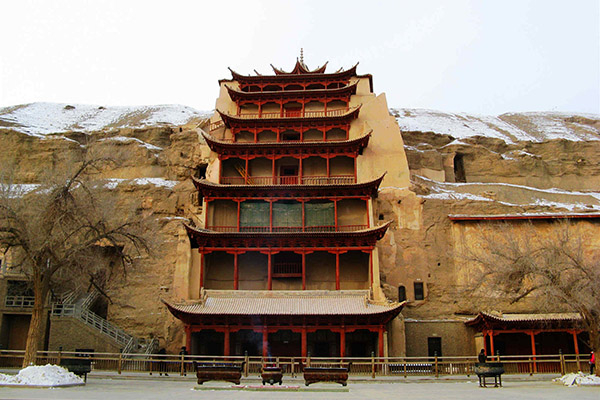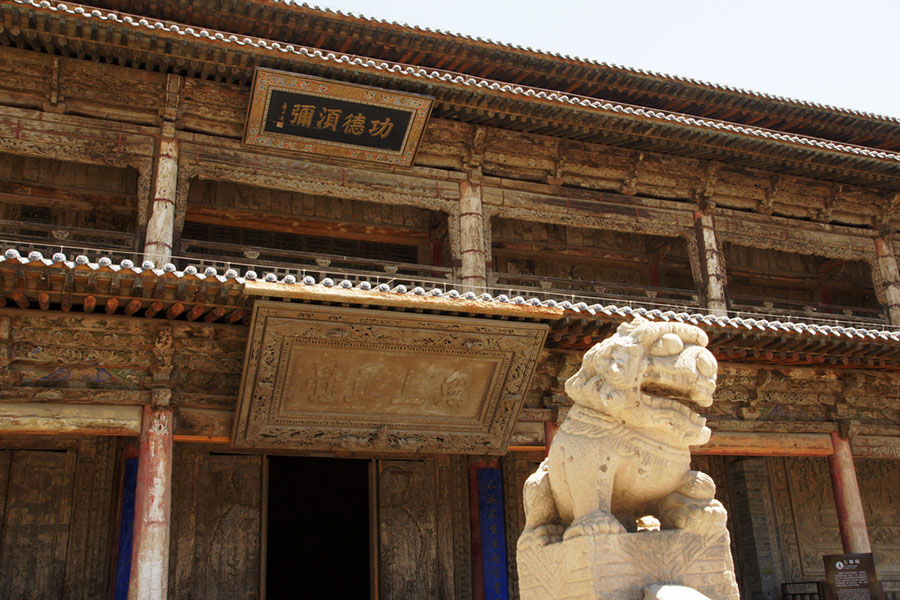Labrang Monastery
Chinese name: 拉卜楞寺(La Bu Leng Si)
Location: Xiahe county, Gannan Prefecture, Gansu Province.
Ticket: Entrance ticket CNY40.00
Estimated tour time:3-4 hours
Recommended time to visit: Jun to Aug
Nearby attractions: Langmu Si, Zhagana Village, Sangke Grassland, Mandala Reality, etc.
Labrang lies at an elevation of 2950 meters (9675 feet) in a valley that is partially surrounded by an evergreen forest in Xiahe.The monastery was founded in 1709 by the first Jamyang Zhepa, Ngawang Tsondru. It is Tibetan Buddhism's most important monastery town outside the Tibetan Autonomous Region. The monastery is one of the six major Tibetan monasteries of the Gelugpa order (Yellow Hat sect of Tibetan Buddhism). The others are Ganden, Sera and Drepung monasteries near Lhasa; Tashilhunpo Monastery in Shigatse; and Kumbum Monastery outside Xining in Qinghai.
Labrang Monastery is situated at the strategic intersection of two major Asian cultures—Tibetan and Mongolian — and was one of the largest Buddhist monastic universities. In the early 20th century, it housed several thousand monks. Labrang was also a gathering point for numerous annual religious festivals and was the seat of a Tibetan power base that strove to maintain regional autonomy through the shifting alliances and bloody conflicts that took place between 1700 and 1950.
In April 1985 the Assembly Hall burned down. It was replaced and the new building was consecrated in 1990.
The monastery complex dominates the western part of the village. The white walls and gilded roofs feature a blend of Tibetan and Indian Vihara architectural styles. The monastery contains 18 halls, six institutes of learning, a gilded stupa, a sutra debate area, and houses nearly 60,000 sutras.
At its height the monastery housed 4,000 monks. Like so many religious institutions, it suffered during the Cultural Revolution; and the monks were sent to their villages to work. After it was reopened in 1980, many of the monks returned; but the government restricted enrolment to around 1,500.
It has a Buddhist museum with a large collection of Buddha statues, sutras and murals. In addition, a large amount of Tibetan language books, including books on history is available for purchase, together with medicines, calendars, music and art objects.
With its succession of squeaking prayer wheels (3km in total), hawks circling overhead and the throb of Tibetan longhorns resonating from the surrounding hills, Labrang is a monastery town unto itself. Many of the chapel halls are illuminated in a yellow glow by flickering yak-butter lamps, their strong-smelling fuel scooped from voluminous tubs. Even if Tibet is not on your itinerary, the monastery sufficiently conveys the mystique of its devout persuasions, leaving indelible impressions of a deeply sacred domain.
Labrang Monastery is an important pilgrimage destination for Tibetans living across the Amdo region. Though religious pilgrims come throughout the year, the most popular time pilgrims arrive in Labrang is the weeks before and after Losar, or Tibetan New Year. Large festivals take place in Labrang during Losar each year. A huge Thangka (a huge Buddhist painting) is displayed on the Thangka Wall near the monastery and many thousands of Tibetans are in attendance. Each day during Losar thousands of pilgrims walk the kora (pilgrimage circuit) around the monastery. The pilgrimage circuit is lined with thousands of prayer wheels.
- HOTEST
- RECOMMEND

